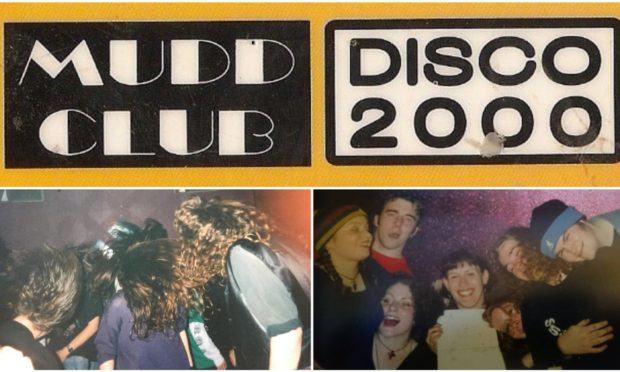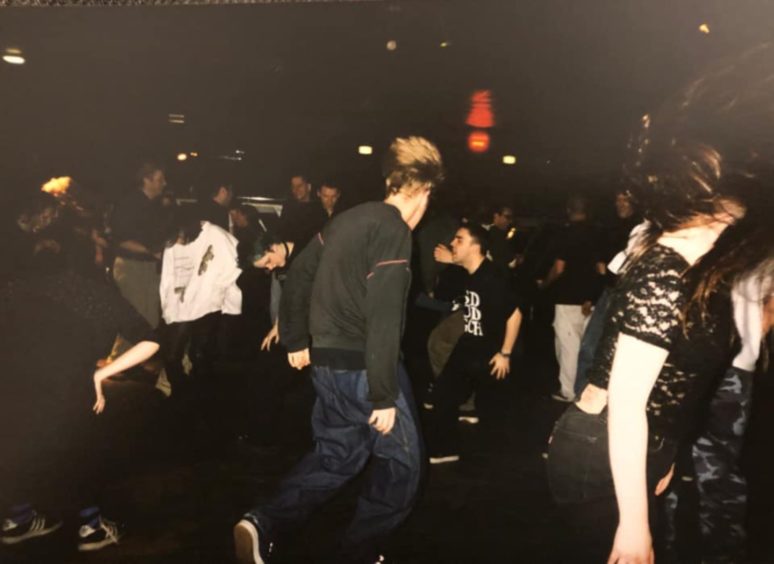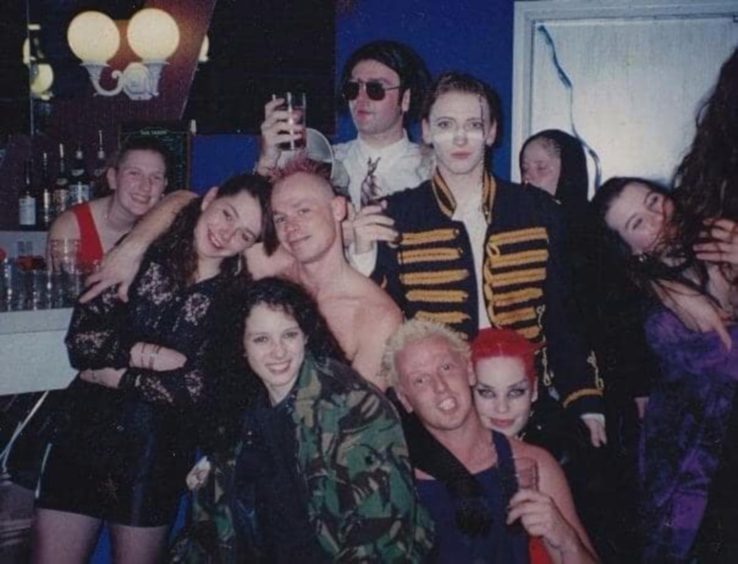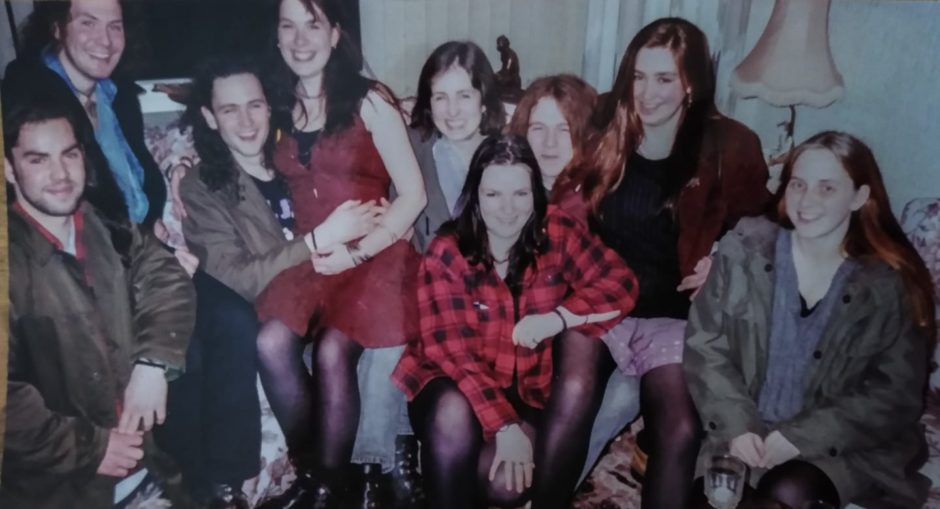Mention the Mudd Club to thousands of folk lucky enough to have experienced its magic in the 80s, 90s and noughties and the chances are they will start grinning insanely.
Running on Monday nights within The Palace on Bridge Street (formerly Ritzy’s, Bonkers and originally the Palace Theatre), it was a haven for alternative music lovers and those who wanted to hang out with like-minded people and have fun.
Hip-hop aficionados, goths, grunge, indie fans and rockers hung out together swilling back cheap pints, many of them moshing as if their lives depended on it.
And who could forget the snakebite and black…
Example list of tracks played at the club
Initially launched in 1987 (although nobody can really be too sure about the exact date), it was the brainchild of manager John Drury with DJ Benny spinning the wheels of steel.
Gillie Gilfillan took over as the club’s manager in 1993 and at that time, it was called Bonkers.
He approached DJ Paul May – soon to become known as the legendary “DJ Paul” – to see if he was interested in running a night there.
Indeed he was and so in late 1993, the Mudd Club was relaunched.
Folk loved it and Monday nights were hugely popular.
Alas, five months after reopening, there was a huge flood in the building.
“Water tanks upstairs had been sabotaged and valves open by someone,” says Gillie.
“The venue was closed and the insurance company did a refurb. It was then that we called it The Palace.
“A highlight for many was the Mudd Club Monday £1 pints.”
The music was totally different to mainstream music at the time – indie and alternative with a slight touch of rock.
“There was no dress code and we encouraged people to come as they pleased, do as they want and as long as there was no fighting or sitting in front of fire exits, it was fine with me,” says Gillie.
“We had fantastic loyal customers and it became a very successful and busy night.
“I’ve been all over the UK and any time you mention Aberdeen and The Palace, people say, ‘yes, I used to go to the Mudd Club!’”.
The Mudd Club ran until around 2002 when The Palace was sold and became Liquid nightclub.
A must-go-to on a Monday
Dundee-born DJ and broadcaster Jim Gellatly was a huge fan of the Mudd Club.
“It was a must-go-to on a Monday night,” he says.
“It was the best night out in Aberdeen where all the misfits would gather.
“It was a brilliant scene at the time and pretty much the first place I headed when I moved to Aberdeen in the early 90s.
“I’d been at other alternative nights across Scotland but the Mudd Club was certainly one of the biggest. A Monday as well! It seems ridiculous now!
“I’ve got great memories of drinking snakebite and blackcurrant while dolled up in my goth gear!
“Good times!”
History of the Mudd Club in Aberdeen
The venue which housed the Mudd Club started life as the Palace Theatre in 1898 and was designed by architect John Rust.
It had a seating capacity of 1,800 including stalls, dress circle and balcony levels.
The Palace Theatre was built on the site of the People’s Palace which was destroyed by fire in 1896.
A variety of films were screened from 1911 onward.
The theatre closed in 1931 for the reconstruction of the interior. The result was an art-deco style cinema with 2000 seats.
In 1936, it was taken over by County Cinemas, who later became part of the Odeon circuit, although the Palace Theatre name remained. It closed as a cinema in 1959.
Alterations were made to level the stalls floor and reopen the stage to create the New Palace Ballroom.
In 1976, the venue became a nightclub named Fusion, then Ritzy’s Discotheque, then Bonkers and later The Palace Nightclub.
In 2002, Historic Scotland designated the Palace Theatre a Grade C(s) Listed building and it has since been placed on the Buildings At Risk Register.
In 2019, the venue operated as the nightclub ATIK.














Conversation